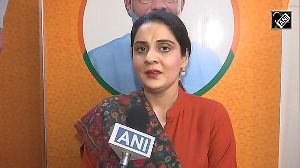For decades, investors treated the Indian pharmaceuticals industry on a par with FMCG in terms of defensive value. The growth was predictable, and stocks rarely saw shockingly large downward price corrections. The predictability ensured that PE discounts were always high.
Gradually, the industry built R&D capability and gained significant marketshare abroad. The first foothold was through reverse-engineering for the Indian market, which had process patent norms.
Indian companies would find cheaper methods of producing given drugs and, once that drug came off patent abroad, they would compete there.
That changed with the adoption of World Trade Organisation norms and the product-patent regime. WTO introduced uncertainties. But it also created opportunities with entirely new businesses such as contract research. Foreign majors became more comfortable in setting up R&D facilities in India.
And, of course, Indian companies retained their formidable ability to create, manufacture and market generics at low prices. They started scaling up operations to exploit the natural advantage of cheaper, skilled human resources.
In the past two or three years, Indian pharma majors have been aggressive at targeting opportunities in the global generics markets. They have been prepared to fight lawsuits on a "win-some, lose-some" basis.
Recent legal outcomes have been favourable. Ranbaxy and Dr Reddy's Laboratories have both gained six-month marketing rights to a cholesterol-reducing drug, Zocor, in the US.
Dr Reddy's has entered an agreement with patent-holder Merck to market the generic version. Ranbaxy, and its Israeli partner Teva, have won a judgment in an US court to gain six-month exclusive marketing rights. Of course, some regulatory approvals are still required.
Indian firms are also targeting inorganic growth through buyouts. According to Goldman Sachs, Indian pharma is a big player in the global M&A game. Of the seven reported deals in 2006, Indian companies were the acquirers in four.
The largest of these four deals was DRL's $570-million acquisition of Betapharm. Ranbaxy also put down about $430 million for three buyouts, including Allen SpA in Italy, and Romania-based Terapia (for $324 million) and Belgium-based Ethimed.
Other majors such as Wockhardt, Lupin and Sun Pharma are also on the lookout for potential targets. Torrent has already taken over the German generics firm, Heumann Pharma from Pfizer.
Most of the acquisitions are of generics firms, which will give Indian companies wider footprints. What's the hurry?
An estimated $22 billion worth of drugs are scheduled to come off patent in 2006. Ownership of companies in Europe could help ensure a bigger slice of the generics pie in the common EU market. (Most analysts reckon US drug outfits are overpriced and European firms provide better value for money.)
In the past three months, pharma companies have definitely not been buying on the market. The buying has been selective but many pharma stocks have delivered excellent returns. Industry-watchers are uniformly optimistic about overall growth prospects, though the investment focus has been divided between contract research outfits and generics firms.
Fourth quarter results have been fairly decent but analysts will point out that the growth numbers are boosted by low-bases in the corresponding Q4, 2004-05. The VAT came into effect in Q1 2005-06 and Q4, 2004-05 saw weak off-take from pharma outfits, due to the necessity for restructuring operations.
The fourth quarter, May, thus, be misleading but future growth cannot be judged on the basis of previous trends: the industry is at an inflection point where it could take off explosively.
What about contract research? Well, revenues are more predictable than in generics so you could back those certainties. Hence, there's plenty of money flowing into CR firms such as Nicholas, Shasun and Cadila Healthcare as well as into generics players like DRL and Ranbaxy.
Indian pharma companies remain highly-priced in terms of PE ratios. They no longer possess the certainties that made them defensive hedges. But they could be a big upside over the next 2-3 years. If you've got the risk appetite, you could do worse than buy into the story.






 © 2025
© 2025